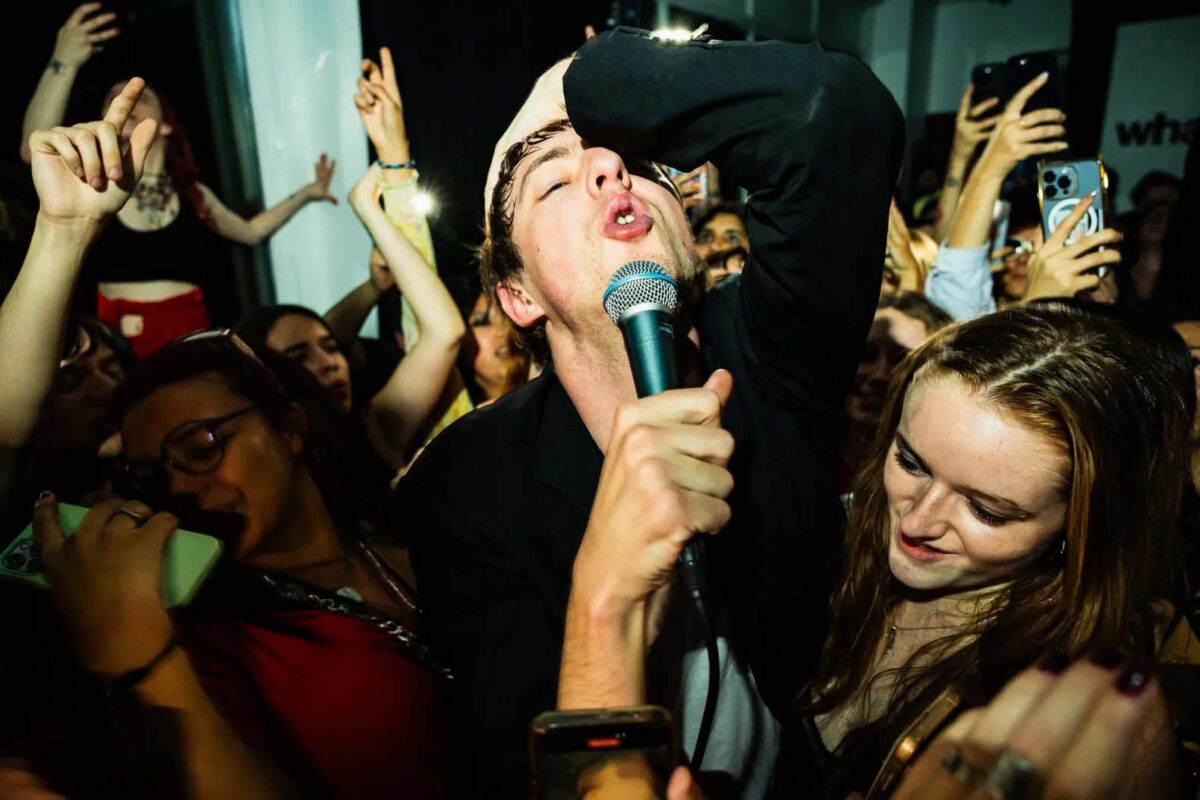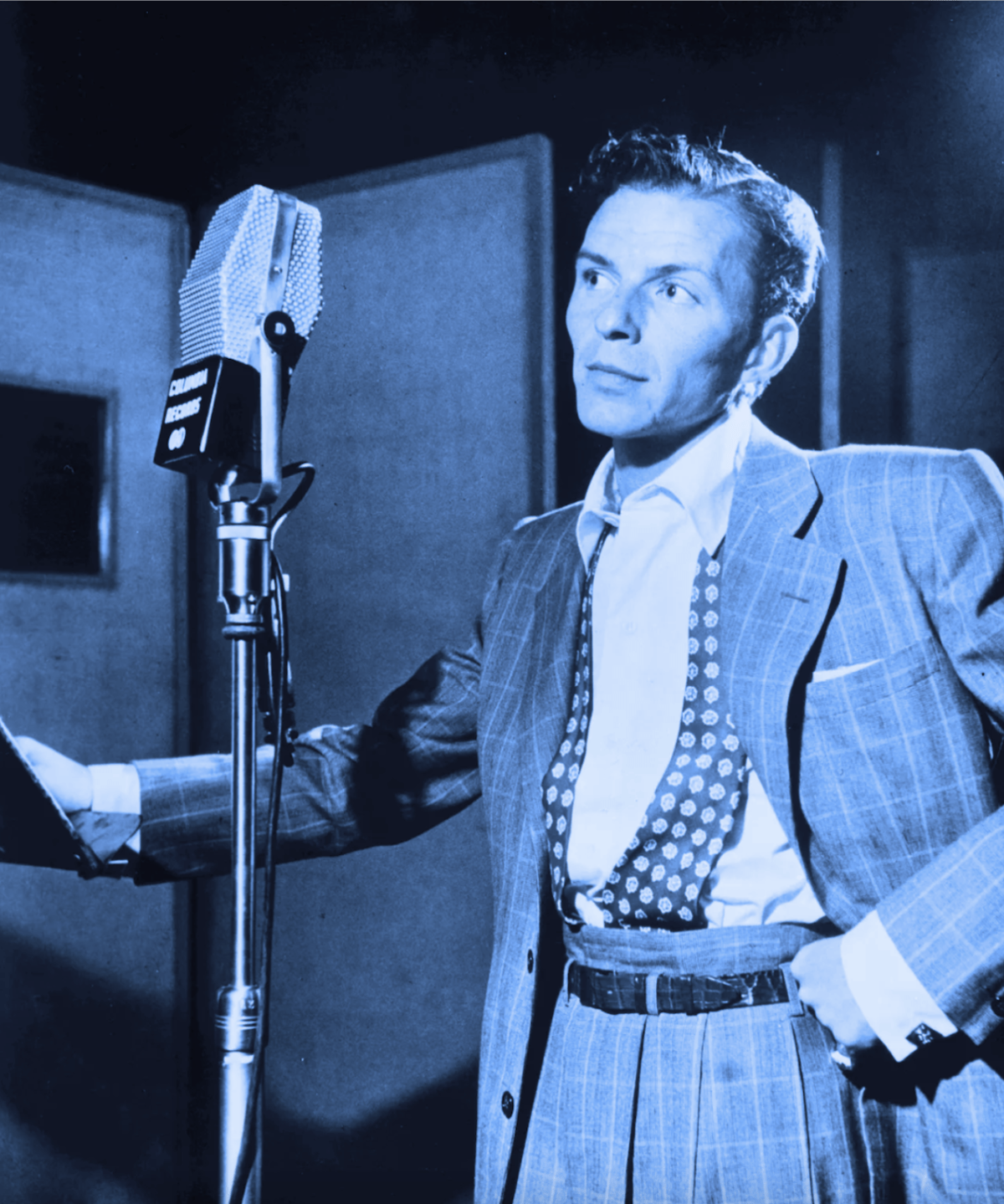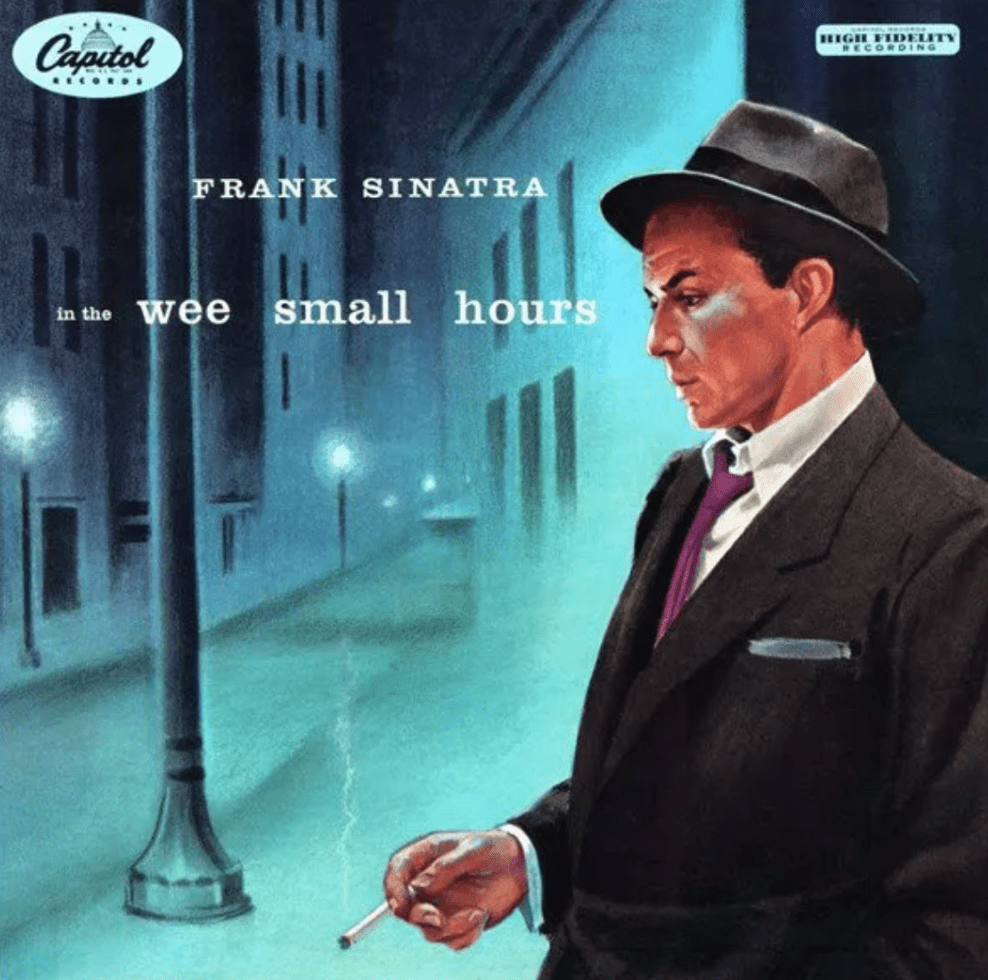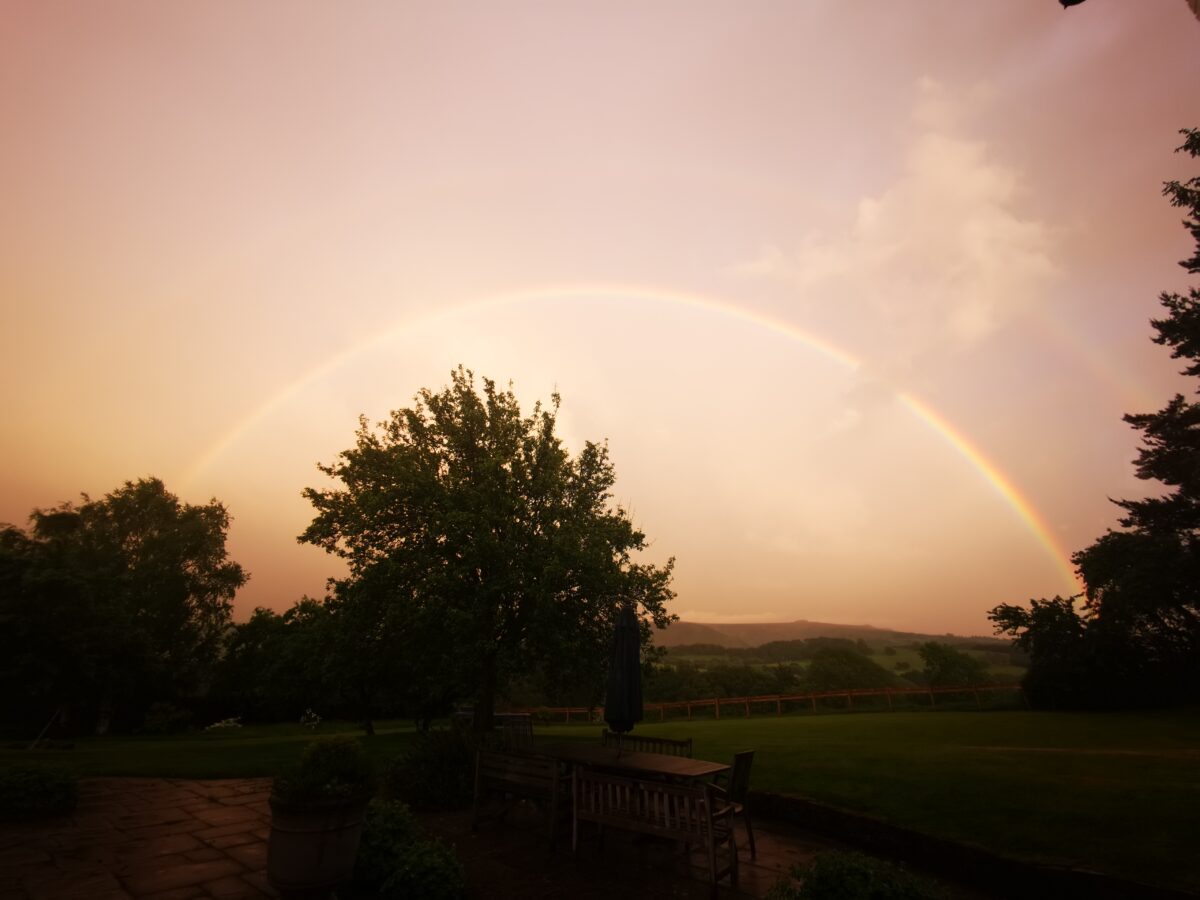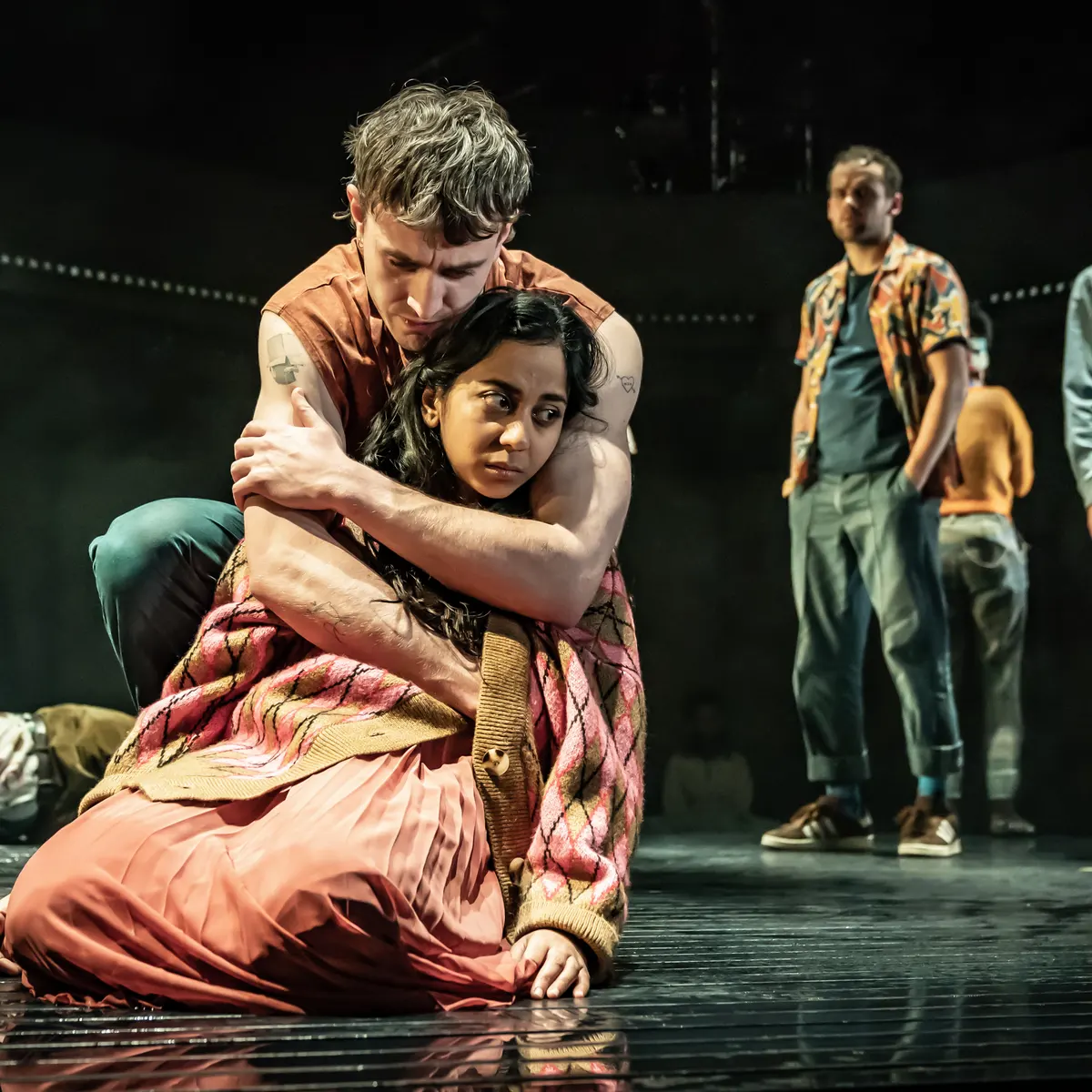By Jack Fry
On my final evening in New York, I surfaced from Broadway subway station into the sticky humidity of a summer night in the city and walked the 200 or so yards to Clockwork bar, the archetype of an American dive bar. Having just swerved around a recurring character from “BRAT Summer,” Addison Rae, on the street, wearing a sparkly pink vest and flip-flops and sipping from a straw, I entered and ordered a Budweiser and a well shot of tequila. The bar was unassuming and poorly lit with walls painted black and graffiti scrawled across any and every surface and the speakers blasted the kind of music that you might find on an “indie sleaze” Spotify playlist. My plans for the night consisted of catching a set from two buzzy NYC artists who would most likely feature on said playlist; The Dare at a bar round the corner and Been Stellar at their album release show over in Brooklyn. Two artists who, if you are fan of Lena Dunham’s Girls, could very well have played at the Bushwick party in the episode ‘the crackcident’. After drinks, I joined a group of NYU students who I’d shared a cigarette with to head to Home Sweet Home where The Dare has accrued a cult following for his DJ sets that he of course calls “freakquencies”.
The Dare, aka Harrison Patrick Smith, is a DJ and producer who emerged post-pandemic out of a supposed downtown scene that centred around so-called “Dimes Square” in Chinatown. You most likely recognise him from the Charli xcx and Billie Eilish remix of ‘Guess’. He has cultivated an image that is both striking and immediately recognisable: a uniform of a skinny Celine suit, sharp mod cut and dark wayfarers all worn with a careless affectation a la Bret Easton Ellis. The character created by The Dare is a nihilistic, horny, self obsessed, drug taking 20 something who lives to party – a kind of modern-day Dionysus. The music and his persona are as brazenly sex obsessed as Tom Ford-era Gucci (G shaped pubic hair and all). He is obsessed with both who he desires (everyone) and being desired. Consequently, much of the lyrical content could have been drawn from Superbad film dialogue. He has resuscitated polarising sonic influences from the electroclash era and injected a smuttiness. Thus his music was bound to be marmite and this is as he intends. He recently stated to the New York Times: “I just like music that rubs people one way or the other”.
The Dare’s music draws unquestionable inspiration from New York’s music of the noughties. His music is a pastiche of bands and projects such as The Rapture, Fischerspooner and LCD SoundSystem, mixing electronic dance music with indie rock and sing shout vocals. On his new album What’s wrong with New York? The Dare brings together his host of influences to make an evocative party record that is both intoxicating and jarring. Whilst electroclash is often cited as a reference point, I’m reminded of the dance and pop music that emerged in the early 2010s. His music, lyrically, is a parody of a lot of recession era pop. Think Ke$ha – when pop music was wholly concerned with “tonight” and the charged mythical promise that it held. The obsession with hedonism in pop music, while not new, was perhaps exacerbated post-financial crash as a form of escapism for Millennials. For Gen Z, the popularity of The Dare’s club-centred music and its inane lyrical content may stem from a similarly cynical mindset. For a generation that has grown up amid the existential threats of climate change and a global pandemic, the attraction to a narcissistic and fatalist debauchery seems apt.
The Dare’s remarkable production ability and DIY attitude have created a characteristic sound where synths resemble computer game samples, beats feel like those of preprogrammed keyboard tracks and his basses sound as if they are buzzing through a blown out speaker. On Perfume the chorus in both cadence and crudeness is reminiscent of ‘I’m too sexy’ by Right Said Fred and LMFAO’s 2010 hit ‘I’m sexy and I know it’. ‘You’re Invited’ invokes the funk warped cyber vocals of Chromeo and the hook in the bridge sounds uncannily like the Duck Sauce hit, ‘Barbara Streisand’. ‘All night’s’ production calls to mind ‘love in stereo’ a track from another indie sleaze icon Sky Ferreira. However, it’s not just electroclash and recession pop he’s drawing from; he is also combining the brash beats of on trend pc pop with the twinkly synths of the eighties.
His set at Freakquencies was filled with a large chunk of people who were probably using fake IDs to get in. The dance floor, although small, was packed with sweaty people jostling under the shattered glare of a disco ball and on the tables of the neighbouring booths. Despite the optics, it all felt rather affected or tame – almost like an attempt at recapturing the reckless abandon of previous generations, a parody of itself. There was a poise that British crowds tend to lack. Maybe it was too early on in the night but everyone seemed, like The Dare, aware and careful of how they appeared. It was almost like they expected to end up on Cobra Snake’s website the next day, caught wide eyed in the white flash, a Cory Kennedy look alike. I left after an hour but not because his set was lacklustre. Criminally, the bar didn’t have a smoking area and they refused re-entry if you stepped outside for a smoke. Much like the man we’d come to see, the scene is a projection, yet evidently it emits a rather seductive light. As I wandered to the subway I passed nearly two blocks worth of people still queuing to get in.
As I waited for the train, rats ran across the tracks strewn with detritus: a Mexican coke bottle, a watermelon vape, a shredded gig poster. I took the J train, rattling across the Williamsburg bridge from Manhattan to Brooklyn, peeking at the skyline through the iron lattice. I walked under the screeching tracks until I reached Baby’s All Right where the pink glow of its neon sign illuminated the gathering crowd outside. I had arrived at the release gig for Scream from New York, the debut album by Been Stellar—a quintet from NYU and the latest group to attempt a rock revival in New York. Having already played storied venues like the Mercury Lounge and been on the cover of the NME, this attempt seems to be genuinely promising.
Been Stellar clearly draws from the same time period as The Dare although they’re reaching into a different bag of sonic influences. Their rock harks back to both the garage era of the Strokes, incorporating shoegaze-y walls of noise, while the production of certain tracks is reminiscent of the post punk of Fontaine’s DC and their debut album Dogrel. Their music, coincidentally produced by the Irish band’s frequent collaborator, Dan Carey, has a fuzzy and gravelly texture that recreates the inescapable white noise of city traffic and construction. This dissonant wash of sound, coupled with a gnawing delivery by slocum in his at times Lou Reed like nasal drawl, gives the music an evocative sense of place. Every so often, however, the distinctiveness between tracks is lost in the slowed tempo guitar noise which drowns out the lyrics and melodies.
Much like the bands who emerged in post 9/11 New York, Been Stellar have evolved out of their own generational defining crisis and in their songs they vividly portray images of mid and post pandemic in the city. On the titular track with a sound that is reaching for the anthemic, they attempt to tackle a subject beyond Manhattan itself seeking to capture a national mood. Frontman, Sam Slocum sings “It’s the end of the world and I feel fine” embodying a generation, who have become so accustomed to crisis they’ve grown apathetic to it “the people didn’t make a sound”. And so whilst he sings “I just don’t have the words they don’t make words for this” the music begins to take over for them. The guitars ring out like sirens, nervy and unavoidable, as if, through sheer force of vibration they could, at the very least, make you physically feel something. Crack the glass and break through the numbness and malaise.
Whilst The Dare is disinterested and that’s part of his charm, Been Stellar plays with a fervour and earnestness that lurks behind the former’s bravado. Amongst statements as expansive as the title track are moments that divulge a longing for intimacy. The band writes of the miscommunications and confusion that can characterise youthful romance across the album on tracks such as ‘Takedown’, ‘Pumpkin’ and album highlight ‘Sweet’. On ‘Sweet’, a song reminiscent of ‘The Rat’ by The Walkmen in its urgency of feeling (not a comparison that I make lightly), they also demonstrate a knack for an emotionally potent couplet: “It won’t always be this way, I know the tide.”
Both Been Stellar and The Dare namecheck New York in their album titles and they are also both making music with an inherent identity drawing from the city’s artists that have come before. For a band who titled their EP Manhattan Youth and had a song on it called ‘Kids 1995’ after the cult classic harmony Corine film, it’s clear that Been Stellar is set on capturing the spirit of New York for a generation obsessed with the past. By invoking these influences, they are blatantly wishing to become a part of the city’s musical canon. On ‘Manhattan youth’, an early single, Slocum sings of his peer group who are “certain of something stuck in the new” nostalgically longing for a bygone era. Perhaps Gen Z’s retrospection is borne out of our complete access to past culture in the age of the internet or maybe we have sought out the era of our childhood as a balm for the prospect of the present and the uncertain future. However, the trouble with indie sleaze or attempts to recreate it by Gen Z is that it never existed in the first place, it is a manifestation of a dream world, a self mythologised (see ‘Meet Me in the Bathroom’) golden age of a scene that was arguably created in retrospect.
Furthermore, can good taste and a sum of influences become something equal to or greater than those things being referenced, a true original? As The Dare writes on his album closer, with a winking self awareness, “sometimes I steal what others wrote”. However, despite these objections and as derivative as some of the sonic and the lyrical themes for both acts are, they are also tapping into a timelessness. Every youthful cohort has felt like this in their 20s, directionless, lonely and seeking connection or meaning in the night or a new experience. It’s almost classic. Slocum wails on the album closer “I have the answer just for a little while”. The yearning in his voice embodies the elusive coming of age clarity that we are all in pursuit of. New York has perennially been the place to be in search of this answer; it is an endless well of romanticisation and inspiration. Who can blame a few more twenty-something year-olds (myself included), however naively, for following in this tradition? To reference Hannah Horvath of Girls, Been Stellar and The Dare may not be the voices of a generation but they may well be a voice of a generation.

